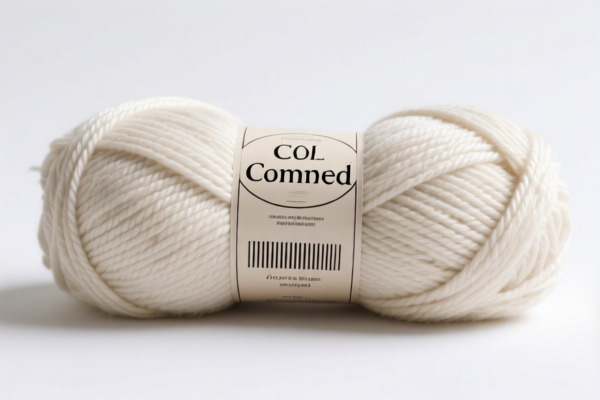| HS Code | Official Doc | Tariff Rate | Origin | Destination | Effective Date |
|---|---|---|---|---|---|
| 5203005000 | Doc | 59.3% | CN | US | 2025-05-12 |
| 5203001000 | Doc | 60.0% | CN | US | 2025-05-12 |
| 5205410020 | Doc | 60.0% | CN | US | 2025-05-12 |
| 5205410090 | Doc | 60.0% | CN | US | 2025-05-12 |




Customs Classification and Tariff Analysis for Combed Cotton Yarn (Ring Spun)
Based on the provided product description and HS codes, the following classification and tariff details are outlined for combed cotton yarn (multiple or cabled), ring spun, for textile use.
✅ HS CODE: 5205410020
Description:
- Cotton yarn (other than sewing thread), containing 85% or more by weight of cotton, not put up for retail sale
- Multiple (folded) or cabled yarn, of combed fibers
- Not exceeding 14 nm per single yarn
- Ring spun (301)
🔍 Tariff Breakdown (as of now, with future changes noted)
- Base Tariff Rate: 5.0%
- Additional Tariff (General): 25.0%
- Special Tariff after April 11, 2025: 30.0%
- Total Tariff Rate: 60.0%
⚠️ Important Notes and Alerts
-
April 11, 2025 Special Tariff:
A 30.0% additional tariff will be imposed after April 11, 2025. This is a time-sensitive policy and must be considered in cost planning and import scheduling. -
Anti-dumping duties:
No specific anti-dumping duties are mentioned for this product category. However, always verify with the latest U.S. Customs and Border Protection (CBP) updates or consult a customs broker for confirmation. -
301 Tariffs:
The "301" in the description refers to Section 301 tariffs imposed by the U.S. on certain imports from China. These are already included in the additional 25.0% tariff and will be increased to 30.0% after April 11, 2025.
📌 Proactive Advice for Importers
-
Verify Material Composition:
Ensure the yarn contains at least 85% cotton by weight and is combed, as this is a key criterion for classification under HS 5205410020. -
Check Unit Price and Certification:
Confirm the unit price and whether any certifications (e.g., origin, compliance with U.S. textile regulations) are required for import. -
Review CBP Updates:
Monitor U.S. Customs and Border Protection (CBP) for any new or updated tariff schedules, especially regarding Section 301 and special tariffs. -
Consider Alternative HS Codes:
If the product does not meet the 85% cotton content or combed fiber criteria, it may fall under a different HS code, such as 5205410090 (Other, not ring spun) or 520300 (cotton fibers, not spun).
📊 Comparison with Other HS Codes
| HS Code | Description | Base Tariff | Additional Tariff | 2025.4.2 Tariff | Total Tariff |
|---|---|---|---|---|---|
| 5203005000 | Other cotton, carded or combed | 4.3% | 25.0% | 30.0% | 59.3% |
| 5203001000 | Cotton fibers, not spun | 5.0% | 25.0% | 30.0% | 60.0% |
| 5205410020 | Combed cotton yarn, ring spun | 5.0% | 25.0% | 30.0% | 60.0% |
| 5205410090 | Combed cotton yarn, other | 5.0% | 25.0% | 30.0% | 60.0% |
✅ Conclusion
For combed cotton yarn (multiple or cabled), ring spun, the most accurate HS code is 5205410020, with a total tariff rate of 60.0%, including the 30.0% special tariff after April 11, 2025. Ensure compliance with material specifications and certification requirements to avoid classification errors and additional penalties.
Customs Classification and Tariff Analysis for Combed Cotton Yarn (Ring Spun)
Based on the provided product description and HS codes, the following classification and tariff details are outlined for combed cotton yarn (multiple or cabled), ring spun, for textile use.
✅ HS CODE: 5205410020
Description:
- Cotton yarn (other than sewing thread), containing 85% or more by weight of cotton, not put up for retail sale
- Multiple (folded) or cabled yarn, of combed fibers
- Not exceeding 14 nm per single yarn
- Ring spun (301)
🔍 Tariff Breakdown (as of now, with future changes noted)
- Base Tariff Rate: 5.0%
- Additional Tariff (General): 25.0%
- Special Tariff after April 11, 2025: 30.0%
- Total Tariff Rate: 60.0%
⚠️ Important Notes and Alerts
-
April 11, 2025 Special Tariff:
A 30.0% additional tariff will be imposed after April 11, 2025. This is a time-sensitive policy and must be considered in cost planning and import scheduling. -
Anti-dumping duties:
No specific anti-dumping duties are mentioned for this product category. However, always verify with the latest U.S. Customs and Border Protection (CBP) updates or consult a customs broker for confirmation. -
301 Tariffs:
The "301" in the description refers to Section 301 tariffs imposed by the U.S. on certain imports from China. These are already included in the additional 25.0% tariff and will be increased to 30.0% after April 11, 2025.
📌 Proactive Advice for Importers
-
Verify Material Composition:
Ensure the yarn contains at least 85% cotton by weight and is combed, as this is a key criterion for classification under HS 5205410020. -
Check Unit Price and Certification:
Confirm the unit price and whether any certifications (e.g., origin, compliance with U.S. textile regulations) are required for import. -
Review CBP Updates:
Monitor U.S. Customs and Border Protection (CBP) for any new or updated tariff schedules, especially regarding Section 301 and special tariffs. -
Consider Alternative HS Codes:
If the product does not meet the 85% cotton content or combed fiber criteria, it may fall under a different HS code, such as 5205410090 (Other, not ring spun) or 520300 (cotton fibers, not spun).
📊 Comparison with Other HS Codes
| HS Code | Description | Base Tariff | Additional Tariff | 2025.4.2 Tariff | Total Tariff |
|---|---|---|---|---|---|
| 5203005000 | Other cotton, carded or combed | 4.3% | 25.0% | 30.0% | 59.3% |
| 5203001000 | Cotton fibers, not spun | 5.0% | 25.0% | 30.0% | 60.0% |
| 5205410020 | Combed cotton yarn, ring spun | 5.0% | 25.0% | 30.0% | 60.0% |
| 5205410090 | Combed cotton yarn, other | 5.0% | 25.0% | 30.0% | 60.0% |
✅ Conclusion
For combed cotton yarn (multiple or cabled), ring spun, the most accurate HS code is 5205410020, with a total tariff rate of 60.0%, including the 30.0% special tariff after April 11, 2025. Ensure compliance with material specifications and certification requirements to avoid classification errors and additional penalties.
Customer Reviews
No reviews yet.